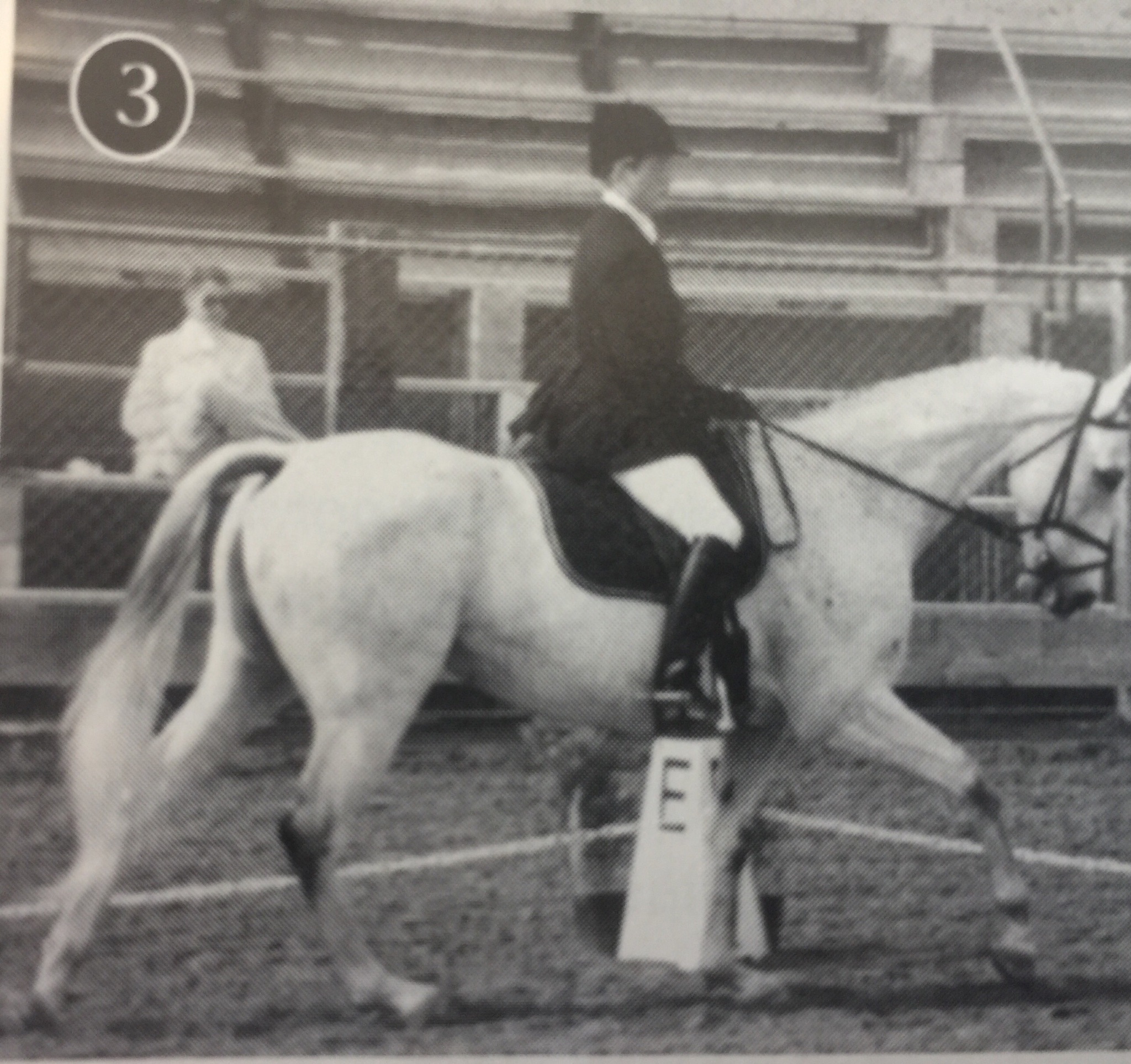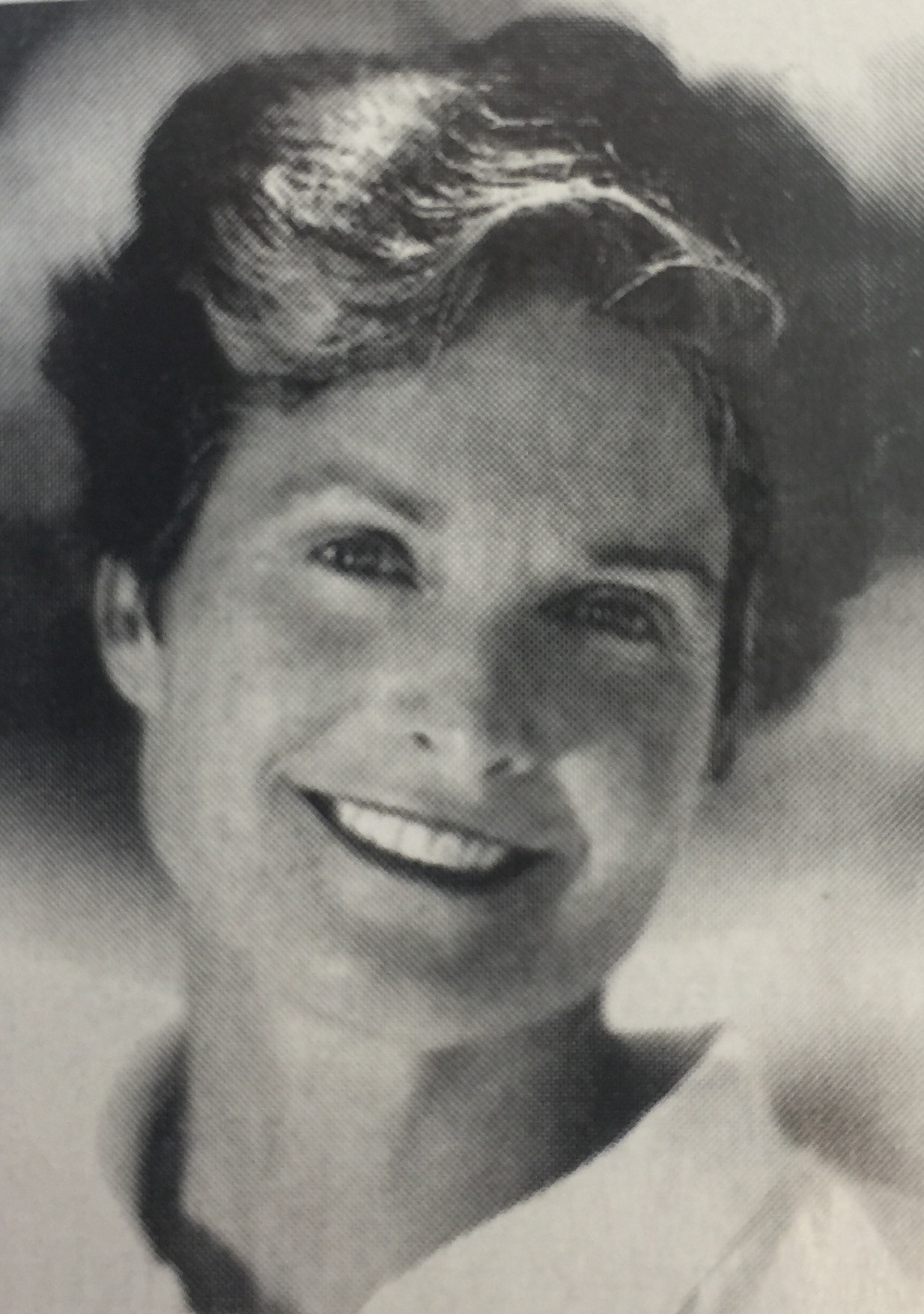This is an elegant pair. Horse and rider are well turned out. Although glove color is not specified by the AHSA, I wish the rider would not show in black gloves. White gloves are more traditionally correct and would enhance this picture. The rider has a lovely position and should be proud of her correct rein position.

The horse is calm, round and balanced in the canter and seems to be paying excellent attention to his rider, who also is paying excellent attention to her horse.
However, there are things that could make this picture even better. There is not going to be much of a moment of suspension in this canter. It needs more jump. The horse is not jumping enough to lift himself off the ground after the landing of the right fore. I can see this because the right hind has not landed far enough under the horse’s body, and the left hind toe is still in the sand. If he were jumping better, the right hind would have landed closer to the line drawn through the rider’s body: ear, shoulder, hip, heel, instead of 12 to 14 inches behind her heel.
In the very moment pictured here, the rider should try to activate the hind quarters of her horse, inspiring him to jump more under himself in the next stride, and then the next, until he understands that she wants him to be more active behind. He is trying to please her. That is obvious from his willing, attentive expression, and he probably assumes that this flat canter is what she wants. Although she should not get angry with him, she should make it clear that she wants more jump in the canter she should explain this through seat and lower leg pressure, reinforced with a light touch of the whip behind her leg.
The canter pictured, although harmonious and smooth looking, would not have sufficient impulsion and engagement to do upper-level movements such as half pass or pirouettes in the collected canter. Lower-level training should prepare the horse for upper-level collection. This means that in the lower levels, the rider should develop the gaits to produce the engagement and strength the horse will need to perform the upper-level work. This rider’s excellent seat will provide her with the ability to get more out of the basics with her horse.
This article first appeared in the June 2000 issue of Dressage Today magazine. Please note that in all current issues, we require all riders to wear helmets.

An American Horse Shows Association “R” dressage judge, Cindy Sydnor lives in Snow Camp, North Carolina, where she teaches, trains and competes. She is an examiner for the United States Dressage Federation Instructor Certification Program and a popular clinician. She has trained with H.L.M. van Schaik, Egon von Neindorff, Karl Mikolka and Col. Bengt Ljungquist. She was long-listed for the 1975 Pan-American Games and the 1976 Olympics.











